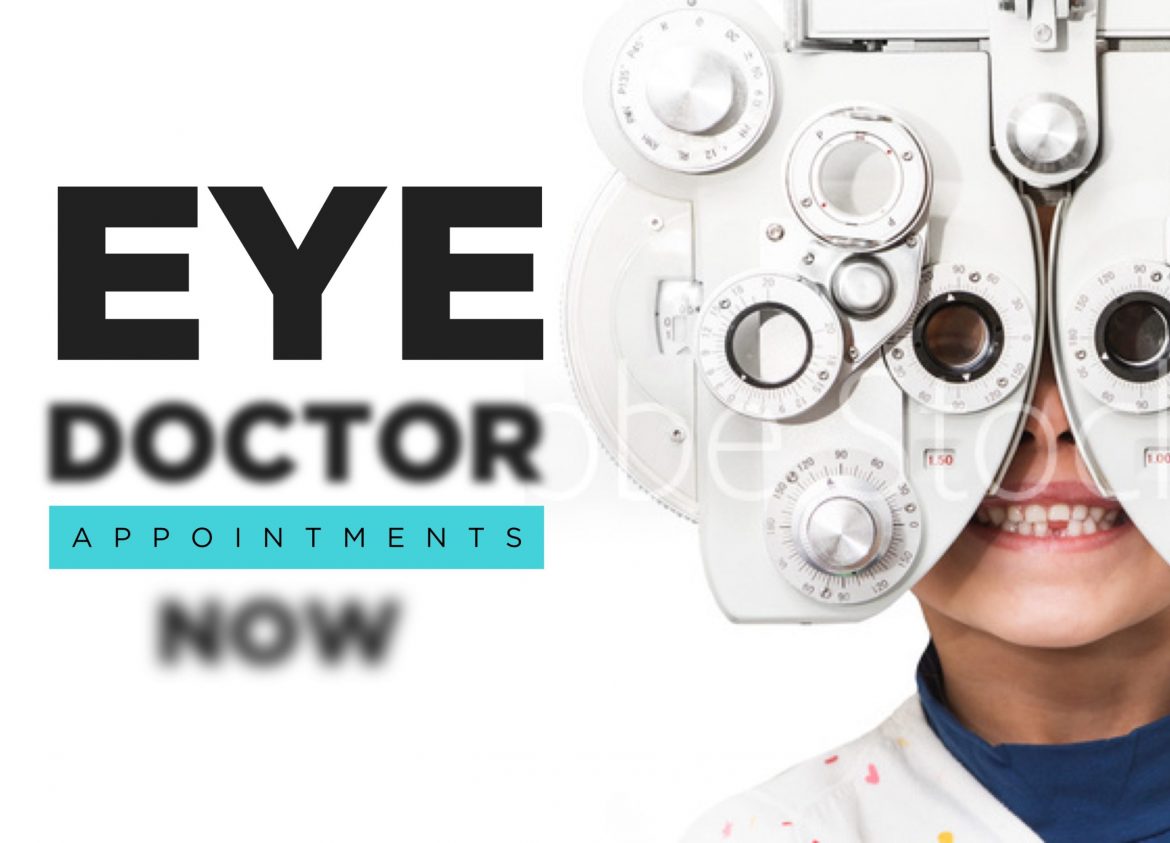![]()
The re-opening of our states is happening now. What will that mean for your vision needs, specifically, appointments at your eye doctor’s office?
Some optometric practices will remain closed. Others are going forward with a limited opening, meaning fewer doctors, less staff, and, as a result, fewer slots available for patients.
Do you hope to soon have an eye examination? Let’s explore what it’s likely to look like in the wake of a global pandemic.
When you arrive for your appointment…
Most optometry offices will request that anyone other than the patient wait outside the office or in the car during your appointment.
They may make an exception if you have a child with you or a caregiver. If this is the case, you’ll likely be scheduled in a particular block of time set aside for those with special requirements, which will probably the first operating hours of the day—perhaps, on specific days.
You probably won’t be invited into the office until the doctor and staff are ready to see you. They may ask you to stay in your car and wait for a text or call to alert you they’re ready for you. Additionally, a staff member may come to your vehicle to conduct a pre-screening. It’s possible they will take your temperature with a contactless thermometer and ask you questions you wouldn’t typically hear.
When you enter the doctor’s office…
When it’s time for you to enter the office, you can expect the staff to provide a face mask and gloves if you don’t already have them. You’ll also probably be asked to wash your hands in a nearby bathroom or to use an alcohol-based hand sanitizer. You’ll probably be told to dry your hands with a paper towel (as opposed to using an air dryer).
It’s unlikely you’ll need to complete any forms because this will be required in advance. If you do need to submit anything in writing, you may be asked to provide your own pen or be given one that has just been sanitized.
Also, you’re bound to find the staff wearing plexiglass shields (or sneeze guards).
During your examination…
In addition to the face shields, when you enter the exam area, you’ll notice the staff and doctor will be using as much disposable equipment as possible.
You may also see smaller plexiglass shields in front of the equipment and instruments used for the exam, as well as new UV disinfecting units used on eyeglass frames and exam room instruments. Hopefully, the staff will replace items like chin covers and sterilize all surfaces with which you come in contact with.
In addition to a mask, gown, and protective eyewear, the doctor will likely use a slit lamp “breath” shield to act as a barrier during the exam.
Ocular discharge and tears are a potential source of contamination and your eyes are also a potential source of exposure, so you will be examined for conjunctivitis (better known as pink eye), which can be a sign of COVID-19.
Viral conjunctival infection is usually caused by adenovirus, however, COVID-19 may cause ocular signs and symptoms, including photophobia, irritation, conjunctival injection and watery discharge. These may require supportive care.
When you checkout…
Check-out protocols have been rejiggered, too, in order to minimize physical contact. At checkout, you may be offered a form of contactless payment, like Apple and Samsung Pay.
Is telemedicine an option for eye conditions?
Telehealth can’t address all eye problems, but it’s an option now. Virtual appointments can allow an eye doctor to care for patients via a computer or smartphone videoconference.
You’ll want to call to ask which issues can be diagnosed remotely. According to Healthgrades, conditions an eye doctor can treat remotely may include:
- Dry eye disease
- Conjunctivitis, pink eye
- Subconjunctival hemorrhage, a red spot on the white of your eye
- Glaucoma
- Macular degeneration
- And more
During these trying times, you’ll want to practice safe hygiene. Read our recommendations for safeguarding your eyes and if you have any questions about your eyes or vision, be sure to ask your eye doctor.

